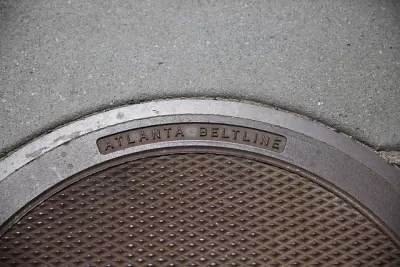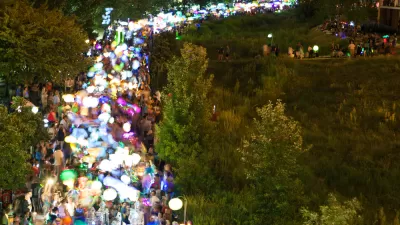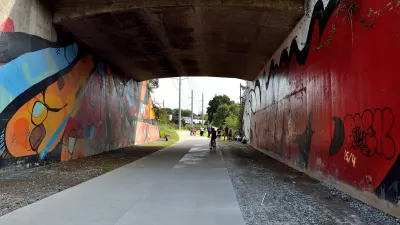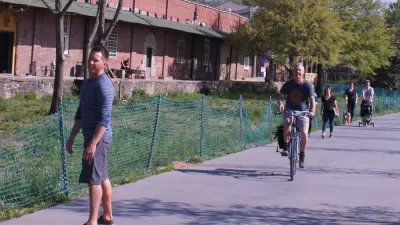A program to pay property-tax increases of nearby homeowners is welcome, but "about ten years too late," one advocate says.

Concerns about affordable housing, gentrification and displacement have accompanied the development of the Atlanta BeltLine since its earliest days. The vision for the project — a 22-mile multi-use trail built on an old railway line looping the entire city of Atlanta — was so clear a catalyst for rising real estate value that the original development plan, completed in 2005, included a goal of building 5,600 workforce housing units to mitigate the impacts of gentrification. Now, with more than half the time elapsed before the projected completion date of 2030, the BeltLine is still scrambling to make good on the promise of affordable housing. And some advocates say too much damage has already been done in terms of displacement, runaway home values, and speculative investment.
Late last year, the Atlanta BeltLine Partnership and Atlanta Beltline, Inc., launched a Legacy Resident Retention Program meant to help existing homeowners stay in their homes as property values, and taxes, continue to rise. The program is aimed at homeowners who have lived in and occupied their homes since at least 2017 and who earn less than 100% of area median income, which in Atlanta is $79,700 for a family of four. The program will cover the increased cost of property taxes for eligible homeowners through 2030. It’s open to people living in a handful of neighborhoods in south and west Atlanta where new BeltLine trails are expected to be completed in the next few years.
The groups running the program expect that some 2,500 homeowners are eligible in the targeted area, and that the program could cost $12.5 million over the next decade, says Rob Brawner, executive director of the Atlanta BeltLine Partnership, a nonprofit that helps guide the implementation of the BeltLine plan. So far, they’ve raised $500,000 from the electric utility Georgia Power, and $200,000 from Bank of America. To date, 128 homeowners have applied to the Legacy Resident Retention Program and 21 have been approved. It’s a small start, Brawner says, but the groups are looking for more funders, and being careful only to commit to those applicants that they know they can assist through the next ten years.
“We know that the long-term solution for this is not for philanthropy to indefinitely pay people’s property-tax increases,” Brawner says. “The long-term solution is a tax policy solution … That’s going to take some time, and we couldn’t afford to lose people [in the meantime].”
FULL STORY: The Atlanta BeltLine Wants to Prevent Displacement of Longtime Residents. Is it Too Late?

Maui's Vacation Rental Debate Turns Ugly
Verbal attacks, misinformation campaigns and fistfights plague a high-stakes debate to convert thousands of vacation rentals into long-term housing.

Planetizen Federal Action Tracker
A weekly monitor of how Trump’s orders and actions are impacting planners and planning in America.

In Urban Planning, AI Prompting Could be the New Design Thinking
Creativity has long been key to great urban design. What if we see AI as our new creative partner?

King County Supportive Housing Program Offers Hope for Unhoused Residents
The county is taking a ‘Housing First’ approach that prioritizes getting people into housing, then offering wraparound supportive services.

Researchers Use AI to Get Clearer Picture of US Housing
Analysts are using artificial intelligence to supercharge their research by allowing them to comb through data faster. Though these AI tools can be error prone, they save time and housing researchers are optimistic about the future.

Making Shared Micromobility More Inclusive
Cities and shared mobility system operators can do more to include people with disabilities in planning and operations, per a new report.
Urban Design for Planners 1: Software Tools
This six-course series explores essential urban design concepts using open source software and equips planners with the tools they need to participate fully in the urban design process.
Planning for Universal Design
Learn the tools for implementing Universal Design in planning regulations.
planning NEXT
Appalachian Highlands Housing Partners
Mpact (founded as Rail~Volution)
City of Camden Redevelopment Agency
City of Astoria
City of Portland
City of Laramie





























